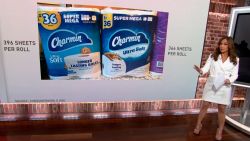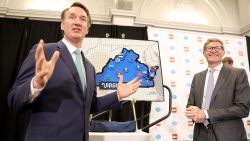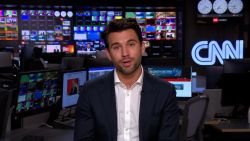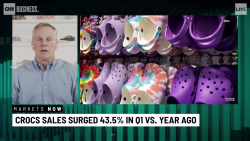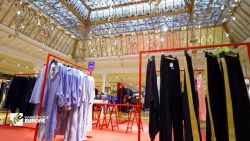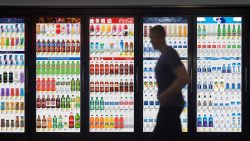Suburban malls in the middle of America have been hit hard due the financial woes of anchor tenants like Macy’s (M) and JCPenney (JCP) and the slow death spiral at Sears.
It’s a very different story in bigger cities.
Shopping centers catering to the upper middle class and affluent – as well as tourists – are thriving thanks to a focus on higher-end brands like Louis Vuitton and Gucci and the presence of Apple (AAPL) stores and Tesla (TSLA) showrooms in their malls.
With that in mind, retail industry watchers will be paying close attention to the new Hudson Yards development in Manhattan, which opened earlier this year filled with such luxury stores as Neiman Marcus, Cartier, Dior, Van Cleef & Arpels and Fendi. (CNN has its New York offices in Hudson Yards.)
Twelve million shoppers have come to Hudson Yards since it opened in March, according to Webber Hudson, executive vice president of Related Companies, the real estate firm that developed and manages The Shops and Restaurants at Hudson Yards.
“The numbers coming through the cash register have been impressive and we’re hoping for continued growth,” Hudson said, adding that tenants lululemon (LULU), Dunhill and Zara have all posted solid sales in Hudson Yards thus far.
High end malls in other parts of the United States are thriving, too – despite the problems facing shopping centers that have lost anchor tenants.
“It’s all about having a shopping center with a point of view,” said Bill Taubman, chief operating officer of retail real estate investment trust Taubman Centers (TCO). “Luxury creates distinction and relevance.”
Cookie-cutter malls have lost their appeal
Taubman Centers operates more than two dozen malls throughout the country, in such ritzy locations as the Beverly Center in Los Angeles, The Mall at Short Hills in suburban New Jersey and The Mall at Green Hills in Nashville.
“We customize our malls for each market and we built most of them. It’s different when you build it than buying it. We are conceptualizing from scratch,” Taubman said. “Ubiquity is an issue for many malls, particularly in competitive markets.”
The luxury consumer is also interested in unique gifts, said Collette Navarrette, director of marketing for the West Coast for shopping center owner Federal Realty Investment (FRT). The companyruns the Santana Row shopping center in San Jose and Plaza El Segundo just outside of Los Angeles.
“We’re bringing in more fresh and interesting brands to attract tech savvy consumers,” Navarrette said.
That includes cashmere sweater and leather goods maker Vince, men’s apparel company TravisMathew and trendy coffee shop Blue Bottle – as well as an Amazon Books.
More affluent shoppers aren’t as interested in getting up at the crack of dawn to take advantage of the doorbuster bargains.
So higher-end malls don’t needBlack Friday deals to lure shoppers.
“The luxury customer is not one that specifically shops for bargains at the holidays. Luxury brands don’t typically discount,” said Kirsten Lee, senior vice president of leasing and director of luxury for Brookfield Properties (BPY) Retail, which is owned by affiliates of real estate giant Brookfield Asset Management (BAM).
“The curation and collection of luxury offerings is a yearround approach. It’s not just for the holidays,” Lee said. “You always have to have the very best options under one roof.”
The new SoNo Collection in Norwalk, Connecticut, Brookfield Place in Manhattan and the Ala Moana Center in Honolulu are among the company’s properties.
Negative macro tends haven’t hurt luxury malls yet
So far, luxury malls have been relatively immune to the threat of higher tariffs on Chinese goods, which could hurt American retailers.
“We have not heard consumers or vendors talk much about tariffs just yet. Everyone is so micro-focused on the holidays,” said Federal Realty’s Navarrette.
“The mood is one of gratitude,” Brookfield’s Lee said. “This is a moment where luxury is lucky to be in an area of retail where there is demand.”
The higher end mall operators are hopeful that they can continue to thrive as consumers shun the more traditional retail chains. To that end, Taubman said, malls must entice customers with interesting retail brands.
Taubman compared mass market stores to the broadcast TV networks. ABC, CBS, NBC and Fox may still have broad appeal, but they are no longer the only game in town in a media world where consumers can also choose from many cable networks and streaming options.
In other words, the luxury retail chains are the shopping mall’s version of Netflix (NFLX), Amazon Prime Video and Hulu.




